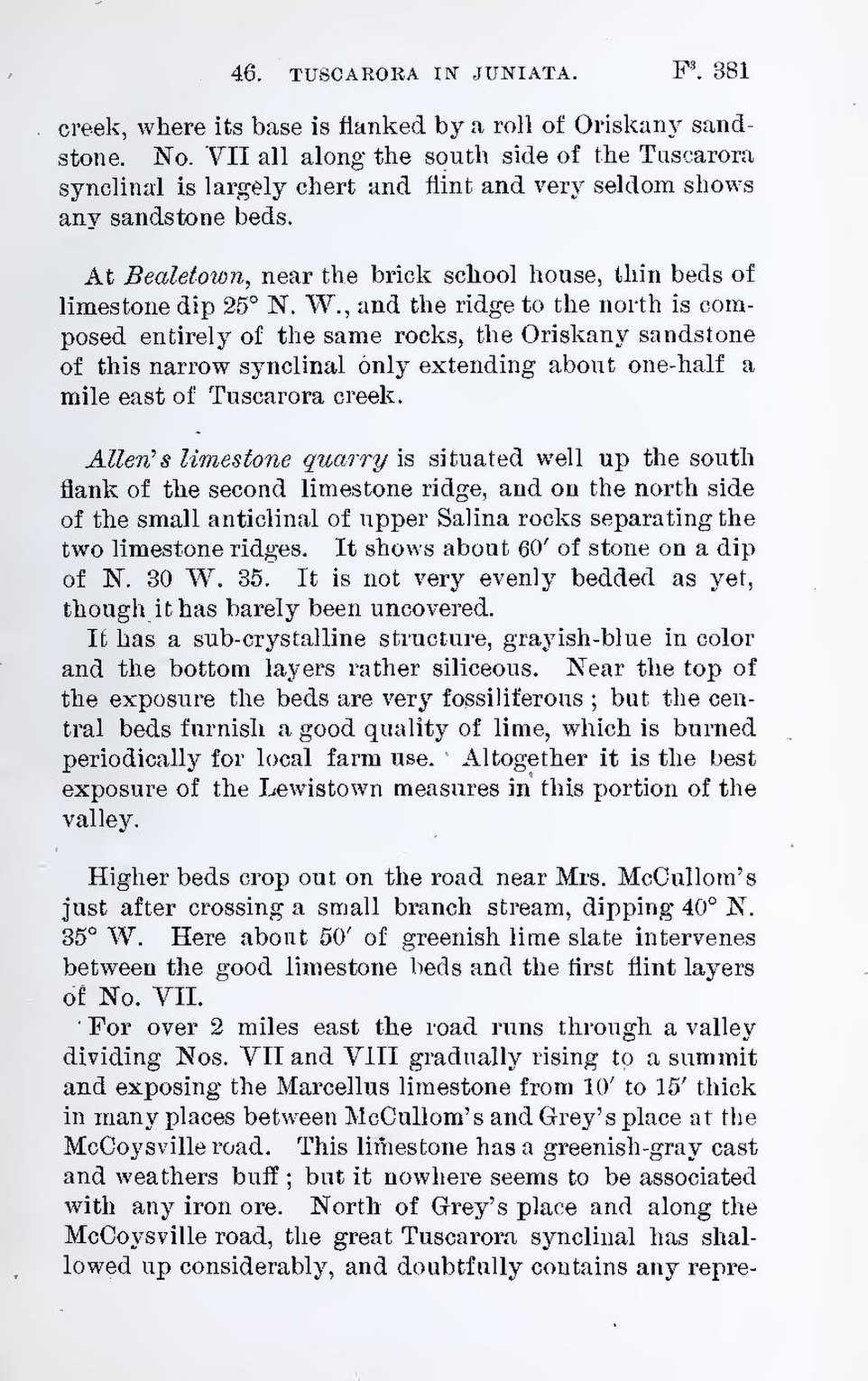creek, where its base is flanked by a roll of Oriskany sandstone. No. VII all along the south side of the Tuscarora synclinal is largely chert and flint and very seldom shows any sandstone beds.
At Bealetown, near the brick school house, thin beds of limestone dip 25° N. W., and the ridge to the north is composed entirely of the same rocks, the Oriskany sandstone of this narrow synclinal only extending about one-half a mile east of Tuscarora creek.
Allen’s limestone quarry is situated well up the south flank of the second limestone ridge, and on the north side of the small anticlinal of upper Salina rocks separating the two limestone ridges. It shows about 60′ of stone on a dip of N. 30 W. 35. It is not very evenly bedded as yet, though it has barely been uncovered.
It has a sub-crystalline structure, grayish-blue in color and the bottom layers rather siliceous. Near the top of the exposure the beds are very fossiliferous; but the central beds furnish a good quality of lime, which is burned periodically for local farm use. Altogether it is the best exposure of the Lewistown measures in this portion of the valley.
Higher beds crop out on the road near Mrs. McCullom’s just after crossing a small branch stream, dipping 40° N. 35° W. Here about 50′ of greenish lime slate intervenes between the good limestone beds and the first flint layers of No. VII.
For over 2 miles east the road runs through a valley dividing Nos. VII and VIII gradually rising to a summit and exposing the Marcellus limestone from 10′ to 15′ thick in many places between McCullom’s and Grey’s place at the McCoysville road. This limestone has a greenish-gray cast and weathers buff; but it nowhere seems to be associated with any iron ore. North of Grey’s place and along the McCoysville road, the great Tuscarora synclinal has shallowed up considerably, and doubtfully contains any repre-
